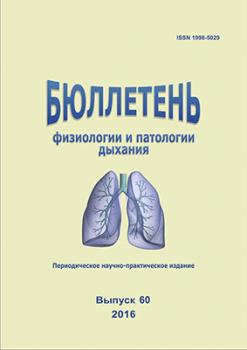Blagoveschensk, Blagoveshchensk, Russian Federation
There was performed a prospective pharmacoeconomic study of effectiveness of different variants of antibacterial therapy in 118 patients diagnosed with nosocomial pneumonia who were treated in specialized departments of General hospital to identify the most effective treatment regimens from the point of view of pharmacoeconomics. Taking into account the characteristics of the local microbiological pattern and the spectrum of sensitivity to antibiotics of the most commonly encountered microorganisms in this hospital there were selected the drugs that have high activity against these pathogens. The patients were divided into groups: the first group (n=57) included the patients with early nosocomial pneumonia including 37 patients receiving combination therapy with Levofloxacin and Ceftazidime, 20 patients with Amoxiclav monotherapy; the second group (n=61) consisted of patients with later nosocomial pneumonia; 34 patients had combined treatment with Amikacin and Cefoperazone/Sulbactam, 27 patients had Imipenem monotherapy. The evaluation and analysis of clinical effectiveness with the method "cost-effectiveness" were done. It was found out that in all compared groups there is a high effectiveness of antibacterial drugs starting from 61%. The highest integral factor of clinical efficacy was in the group of Imipenem (86.1%), then in the group of Levofloxacin and Ceftazidime (71.5%), in the group of Amikacin and Cefoperazon/Sulbactam (70%), in the group of Amoxiclav (61%). Noteworthy is that only in the group of Imipenem there was no need for additional antibacterial therapy and there was short term treatment. While analyzing the cost-effectiveness correlation, it was found out that the least cost per unit of effectiveness was the cost of treatment with the combination of Levofloxacin and Ceftazidime for patients with early nosocomial pneumonia and the cost of therapy with Amikacin and Cefoperazon/Sulbactam in patients with late nosocomial pneumonia. Despite the high cost of a single dose, there was a reduction in the cost while using Imipenem due to the decrease of the time of treatment of patients in the hospital and the intensive care unit and no expenses for additional antibacterial drugs. Imipenem can be used as monotherapy as an alternative to the standard combination therapy in severe nosocomial pneumonia, primarily in patients located in intensive care unit.
nosocomial pneumonia, pharmacoeconomics, antibacterial therapy.
1. Beloborodov V.B. The concept of de-escalation therapy. Klinicheskaya farmakologiya i terapiya 2002; 11(2):16-19 (in Russian).
2. Wenzel R., Brewer T., Butzler J-P., editors. A Guide to Infection Control in the Hospital. London: BC Decker Inc. Hamilton; 2002.
3. Domnikova N.P., Sidorova L.D., Nepomnyashchikh G.I. Nosocomial pneumonias: pathomorphogenesis, features of clinics and therapy, criteria of prognosis. Мoscow: RАМS; 2003 (in Russian).
4. Ilyukevich G.V. De-escalation - a new approach to antibacterial therapy of severe nosocomial infections. Meditsinskie novosti 2004; 2:3-9 ( in Russian).
5. Pertseva T.O., Bontsevich R.O. The treatment of patients with nosocomial pneumonia. Ukrainskiy khimioterapevticheskiy zhurnal − Ukr. J. Chemotherapy 2002; (3-4):11-15 (in Ukrainian).
6. Stratchounski L.S., Reshedko G.K., Ryabkova Е.L. Recommendations on the optimization of antimicrobial chemotherapy of nosocomial infections caused by gram-negative bacteria in intensive care units (Guidelines for clinicians). Klinicheskaya mikrobiologiya i antimikrobnaya khimioterapiya 2002; 4(4):379-390 (in Russian).
7. Stratchounski L.S. Antibacterial therapy of community-acquired pneumonia in the outpatient setting. Consilium medicum. Ekstra-vypusk 2002; 6-9 (in Russian).
8. Sidorenko S.V. Тhe Role of quinolones in antibacterial therapy. The mechanism of action, resistance of microorganisms, the pharmacokinetics and tolerability. Russkiy meditsinskiy zhurnal. 2003; 11(2):98-102 (in Russian).
9. Stetsyuk O.U., Andreeva I.V. Modern principles of antibacterial therapy of severe and life-threatening bacterial infections. Farmateka 2008; 4:12-17 (in Russian).
10. Suvorova M. P., Yakovlev S.V., Dvoretskiy L.N. Ciprofloxacin and the combination of Cefotaxime and Amikacin in severe nosocomial pneumonia: results of a comparative, randomized, open clinical and pharmacoeconomic studies. Consilium medicum 2000; 2(5):136-139 (in Russian).
11. Suvorova M.P., Yakovlev S.V., Basin E.E., Bagin V.A., Barkanova O.N., Eliseeva E.V., Kovelenov S.V., Kondratenko N.V., Nikolaeva T.A., Ovchinnikova O.E., Palyutin Sh.Kh., Portnyagina U.S., Rog A.A., Tokareva I.Ya., Trapeznikova B.V. Current recommendations for antibiotic therapy of nosocomial pneumonia in intensive care unit on the basis of multi-center monitoring of pathogens and resistance in medical establishments of Russia. Farmateka 2015; (14):46−50 (in Russian).
12. Steynberg L.L., Zyryanov S.K., Belousov Yu.B. Clinical and pharmacoeconomic analysis of carbapenems (meropenem, imipenem and doripenem) in nosocomial pneumonia treatment. Farmakoekonomika. Sovremennaya farmakoekonomika i farmakoepidemiologiya 2014; 1:13-17 (in Russian).
13. Yagudina R.I., Kulikov A.Yu., Krysanov I.S. Pharmacoeconomic analysis of the starting modes of empirical antibacterial therapy of severe nosocomial pneumonia in the intensive care unit. Russkiy meditsinskiy zhurnal 2006; 14(21):1505-1511 (in Russian).
14. Yakovlev S.V. The significance of levofloxacin (Tavanik) for respiratory infections. Russkiy meditsinskiy zhurnal 2008; 16 (7):471-475 (in Russian).





